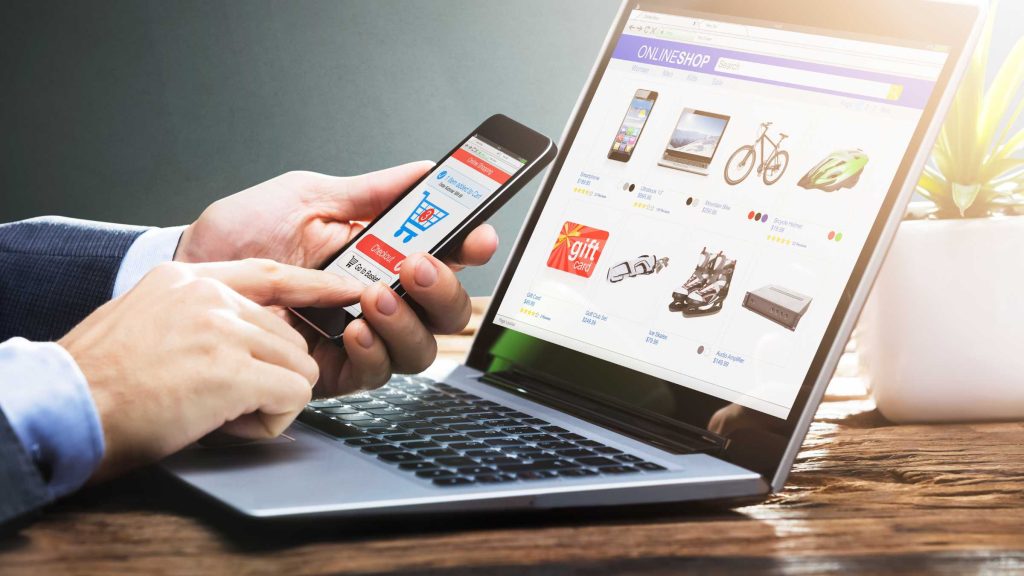Build Trust in Your Online Store : In 2025, building trust in your online store is not just a best practice—it’s a survival strategy in a highly competitive digital marketplace. With more consumers turning to eCommerce than ever before, and with cybercrime and data breaches still making headlines, trust has become the currency of online success. Whether you’re launching a new Shopify store or growing your WooCommerce brand, establishing credibility is critical to converting visitors into loyal customers.
Table of Contents
This comprehensive guide explores how to build trust in your online store in 2025 using modern strategies, emerging technologies, and timeless psychological triggers that consumers continue to value.
Why Trust is Crucial in eCommerce

Before diving into the strategies, it’s important to understand why trust matters so much in 2025. Online shopping eliminates the tactile, face-to-face interactions found in physical stores. Customers cannot try products or meet sellers, so they rely on digital signals to assess credibility. With increasing competition from D2C brands, marketplaces like Amazon, and even AI-driven dropshipping sites, consumers are more skeptical than ever. If your online store doesn’t feel trustworthy within seconds of landing on it, visitors will bounce to a competitor.
Trust directly impacts your conversion rates, customer retention, average order value, and lifetime customer value. Moreover, trust improves your brand reputation, strengthens SEO rankings (G rewards sites with high engagement and low bounce rates), and supports sustainable growth in 2025’s digital economy.
Professional Website Design and UX Optimization
In 2025, a clean, fast, and professional website is the foundation of online store trustworthiness. Your store’s design speaks volumes about your brand. Mobile-first design is non-negotiable. Over 70% of online shopping in 2025 occurs on mobile devices. Ensure your website is responsive and designed for small screens first. Fast loading speed is crucial—shoppers expect your site to load in under 2 seconds. Use tools like G PageSpeed Insights and Core Web Vitals optimization. Simple navigation is a must. Clean menus, filters, and a well-organized structure help users find what they need without frustration. Secure design elements such as SSL certificates, visible trust badges, and “secure checkout” banners contribute to psychological security.
Use HTTPS and SSL Certificates
No shopper in 2025 will enter their credit card on a site without HTTPS encryption. G Chrome also flags non-secure websites, harming both trust and SEO. Use SSL certificates from trusted providers like Let’s Encrypt or paid vendors for extended validation (EV). Display trust seals from SSL providers in your footer and during the checkout process.
Also Read : Augmented Reality in eCommerce: Try-Before-You-Buy in 2025
Make sure all your subdomains are secured, especially if you use third-party checkout platforms.
Showcase Genuine Customer Reviews and Ratings
Social proof remains one of the strongest trust-building tools. Displaying authentic customer reviews can increase conversions by up to 270%. Use plugins or tools like Yotpo, Judge.me, or Loox for gathering and displaying verified reviews. Feature customer testimonials with photos and location data for authenticity. Allow filtering of reviews by rating, product use case, or customer demographics. Encourage reviews with post-purchase emails and loyalty incentives.
Implement Transparent Return and Refund Policies
A generous, clearly stated return policy reassures customers and reduces the perceived risk of buying from your store. Offer 30-day or 60-day return windows with detailed instructions. Display your return and refund policy on product pages and during checkout. Use plain, reassuring language like “Risk-Free Guarantee” or “Hassle-Free Returns” to reduce anxiety during purchase.
Display Contact Information and Live Chat Support
The more reachable your store appears, the more trust you build. Customers want to know they can get help when they need it. Provide a phone number, email, and physical address in your footer or contact page. Use AI-powered live chat bots that escalate to humans when needed. Platforms like Intercom or Tidio can improve customer response times. Offer multiple contact channels including WhatsApp, Facebook Messenger, Instagram DMs, or Telegram depending on your audience.
Use Trust Badges and Security Logos
Strategically placed trust badges can significantly increase checkout completion rates. Include payment icons such as Visa, MasterCard, PayPal, and others near your cart or product pages. Add badges like “McAfee Secure,” “Norton Secured,” or “Verified by Visa.” Feature platform trust signals like “Shopify Secure” or “Powered by Stripe” to boost shopper confidence.
Feature Social Proof and Influencer Collaboration
Consumers trust other consumers more than brands. In 2025, social proof extends beyond reviews to user-generated content and influencer mentions. Embed Instagram or TikTok product usage videos directly on your site. Collaborate with nano and micro-influencers to provide authentic product endorsements. Include “As seen on” logos from blogs, news outlets, or podcasts where your brand is featured to boost perceived authority.
Build a Strong “About Us” Page and Brand Story

In 2025, consumers want to know the “why” behind your brand. An authentic backstory fosters emotional connection and trust. Share your mission, values, and the inspiration behind your business. Include behind-the-scenes photos, founder bios, or timeline graphics. Emphasize any ethical sourcing, sustainable packaging, or community initiatives that differentiate your brand from competitors.
Enable Verified Customer Accounts and Guest Checkout
Shoppers want both security and convenience. Offering flexible account creation options increases conversion while building trust. Let customers choose between creating an account or checking out as a guest. Use email verification to confirm account authenticity. Allow easy password resets and account management to build long-term user trust.
Use AI and Personalization Ethically
While AI can improve shopping experiences, over-personalization can feel invasive. In 2025, ethical personalization is key. Use AI for product recommendations, restock alerts, or smart chatbots. Be transparent about data usage and offer opt-out options for personalization. Highlight “We value your privacy” popups during data collection to earn customer confidence.
Encourage Customer Loyalty and Referrals
When customers return, it’s a sign they trust your store. Loyalty programs create a virtuous cycle of engagement and belief. Offer points, discounts, or early access to repeat buyers. Use tools like Smile.io or ReferralCandy to automate loyalty and referrals. Feature a VIP program with exclusive benefits and member-only offers that reward long-term engagement.
Showcase Third-Party Certifications and Media Mentions
Third-party validation is powerful. It tells shoppers that your store is recognized and vetted by external experts. Display logos of publications where you’ve been featured. Mention any certifications like Fair Trade, USDA Organic, or ISO standards. Link to interviews, podcasts, or awards related to your brand for added credibility.
Deliver a Seamless Post-Purchase Experience
Trust doesn’t end at checkout. A smooth delivery and follow-up experience builds long-term confidence. Send real-time order tracking updates via SMS or email. Offer delivery guarantees or insurance on packages. Ask for feedback and reviews once the item is delivered to improve customer retention and social proof.
Prioritize Transparent Pricing and No Hidden Costs
Surprise fees are a trust-killer. Be upfront about all charges from the beginning. Show final pricing with taxes and shipping early in the checkout process. Offer free shipping thresholds clearly marked on product pages. Use tags like “Price Match Guarantee” or “No Hidden Charges” to reassure customers of your fairness.
Comply with Data Privacy and Cookie Laws
In 2025, data privacy compliance is a legal and ethical obligation. Shoppers want to know how their data is used. Display clear cookie banners with opt-in/opt-out capabilities. Publish an updated Privacy Policy and Terms of Service. Be transparent about third-party tracking and marketing pixels, and explain how customer information is protected.
Integrate Payment Gateways That Consumers Trust
Consumers trust payment methods they’re familiar with. Offering popular and secure options increases checkout trust. Integrate PayPal, Stripe, Apple Pay, G Pay, and Buy Now Pay Later (BNPL) options like Klarna or Afterpay. Let users choose their preferred payment method without friction, and ensure that payment logos are visible throughout the shopping journey.
Build Trust in Your Online Store – Conclusion

Building trust in your online store in 2025 is a strategic blend of design, transparency, security, and customer-centricity. With evolving shopper expectations and the growing influence of AI and mobile-first technology, trust is no longer earned through branding alone—it requires actionable, visible, and interactive proof at every step of the buyer journey.
Buy Now : 100+ Shopify Premium Themes
By implementing these best practices—from SSL certificates and transparent return policies to UGC and influencer endorsements—you’ll not only reduce bounce rates and abandoned carts but also foster loyal customers who become brand advocates. In today’s digital economy, trust isn’t just a factor of success—it is the foundation of it.
Disclaimer : The information provided in this guide is for educational purposes only. It does not constitute business advice or legal compliance counsel. Always consult eCommerce professionals and legal experts when implementing customer data privacy, tax, or return policy frameworks.
Keywords : Build Trust in Your Online Store – Build Trust in Your Online Store 2025 – Build Trust in Your Online Store Guide , Build Trust in Your Online Store now.








